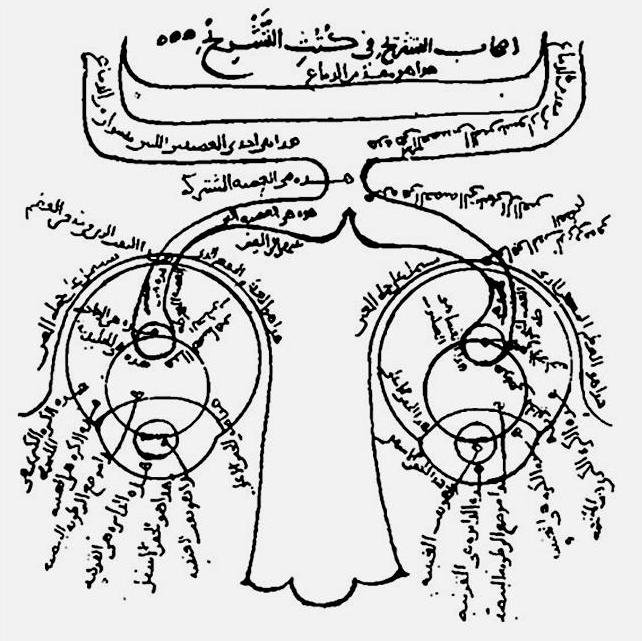
In How One Sees, Siegfried Zielinski and Franziska Latell trace the genealogy of vision. Quoting the philosopher Abu Nasr Al-Farabi (870-950), the authors write:
Optics teach “according to the true circumstances of what is looked at to find the matter, the quantity, form, position and order and the other things which of the things is where the gaze can be mistaken […] That is done with an object via an instrument, which serves to direct the gaze in such a way that it does not err”.[…] Al-Farabi assumes an active ray of sight; it carries light from inside the eye or human body and is beamed through the eye at external objects to scan them for perception. This divine scanner is one of the foundations of the Platonic world-view.
The image above is a sketch illustrating the theories of Ibn al-Haytham, astrophysicist, inventor of the camera obscura and keen moon-gazer for whom the light is emitted from luminescent objects and find their way to the retina. Al-Haytham’s model contradicts the active ray of sight’s model and will influence medieval perspectivists and aid the development of perspectival representation.
How One Sees, Siegfried Zielinski and Franziska Latell in Variantology 4: On Deep Time Relations of Arts, Sciences and Technologies In the Arabic-Islamic World and Beyond (Kunstwissenschaftliche Bibliothek), 2011.